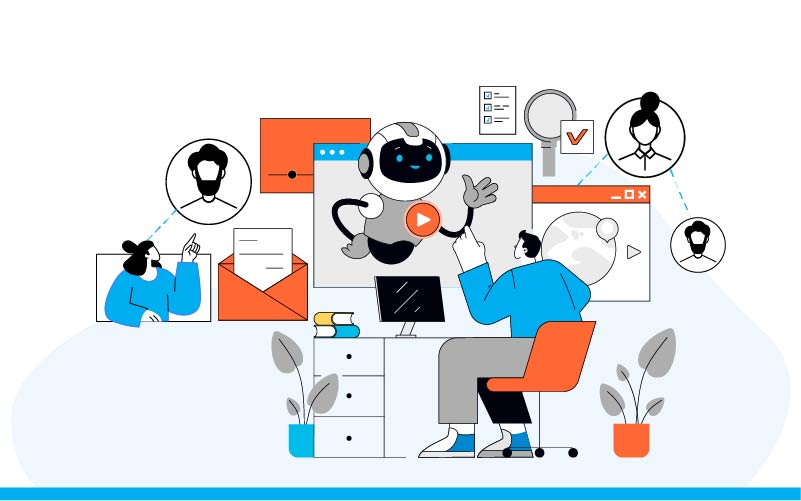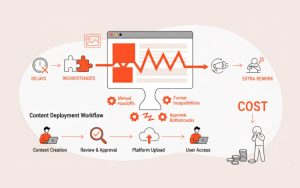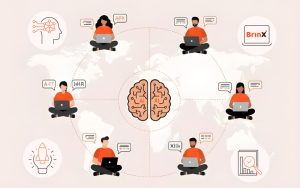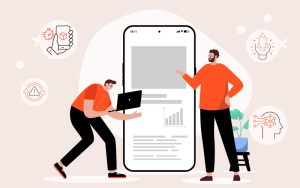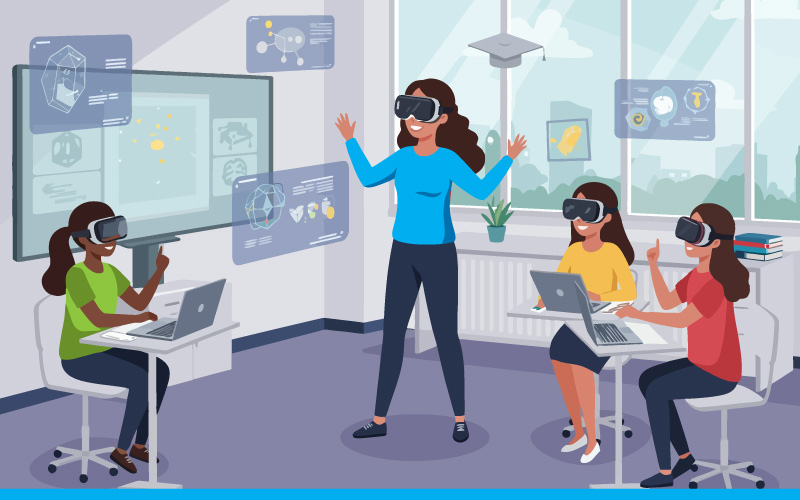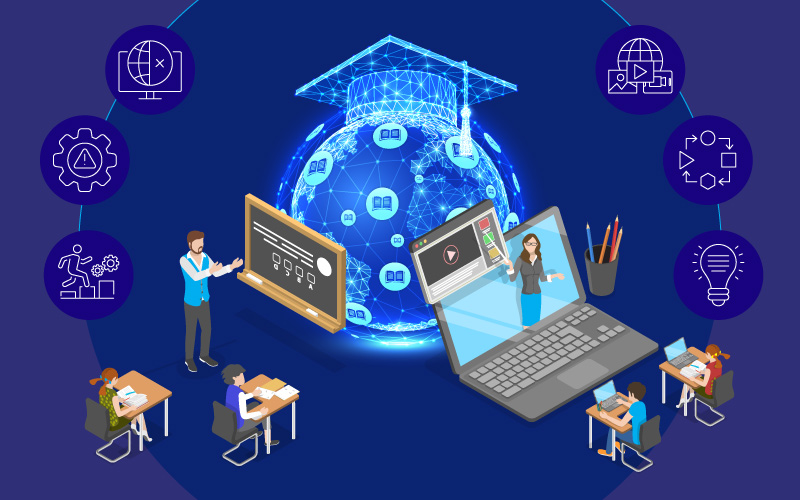A while back, I was helping my niece study for her algebra test. She’s bright, curious, and very vocal about her relationship with equations. We opened her workbook, and within minutes she gave me that look children reserve vegetables they never agreed to eat. The problem wasn’t her ability. It was that the lesson marched ahead without noticing where she actually was. She needed support in a specific spot, and instead she got a generic path that didn’t match her pace, her confidence, or her understanding in that moment.
Watching her struggle through material, I was reminded of something I’ve seen for years in classrooms, training rooms, and corporate dashboards as I saw her struggle with content that obviously didn’t meet her where she was. People become disengaged when learning doesn’t change with the learner. It’s because the experience isn’t paying attention, not because they don’t care.
Most of us have had that moment. Sitting through a program that moves too fast or too slow. Clicking through a module that assumes we’re all starting from the same place. Trying to stay focused while the content feels just out of sync with our reality.
That afternoon with my niece made something click for me again. People don’t need more content. They need content that responds to them. And that’s exactly where AI-driven personalization starts to change the game.

The Problem with Old-School Learning Paths
If you’ve ever taken a mandatory training that felt like running a marathon in slow motion, you know exactly what I mean. Everyone gets the same modules, the same videos, the same quiz that asks which fire extinguisher to use on a burning toaster.
These linear paths make it tough for learners to stay engaged. They ignore motivation (hello Self-Determination Theory), overload working memory, and rarely use instructional cues that keep attention high. It’s like expecting every learner to wear the same shoe size. Sure, someone will get lucky. Most won’t.
And here’s the funny thing. We talk so much about “personalized learning” in L&D, but historically it’s been more of a wish than a workflow.
AI finally gives us tools that can keep up with humans instead of the other way around.
That is where the credentials enter the picture.

Where AI-Driven Personalization Steps In
The magic of AI-driven personalization isn’t just fancy algorithms. It’s the experience those algorithms create.
-
Real-time adaptation
-
Dynamic difficulty adjustments
-
Behavior-based recommendations
-
Nuanced learner profiles that grow with use
A learner’s prior performance, confidence ratings, errors, hobbies, and behavioral clues may all be used by AI to guide them toward information that is appropriate for their readiness level. It’s almost like having a personal instructor sitting next to you who doesn’t judge your reliance on calculators or breathes too loudly.
This is where models like ADDIE and SAM quietly live behind the scenes. AI helps you analyze and iterate faster, making your design cycles feel more like quick, meaningful tweaks instead of massive rebuilds.
And from a learning science perspective, the combo is perfect. Cognitive Load Theory, ARCS motivation strategies, microlearning reinforcement – AI can calibrate all of these in real time. You get learning that feels supportive instead of overwhelming.

A Personal Story: When AI Saved My Project (and My Sanity)
A few years ago, I was leading a project for a client rolling out a global compliance program. You know the type. Long modules. Low stakes for learners. High stakes for the audit team. Classic headache cocktail.
We built a beautiful course. Or so, we thought.
Once it launched, learners bailed on the modules faster than I bail from group chats when someone suggests an escape room.
We needed a reset. Not just better content, but a smarter system.
We tested an adaptive layer that used AI to adjust lesson difficulty and skip familiar content. Learners may quickly go over what they already know and take their time when they need more practice. Instead of large, daunting tests, the system encouraged them with brief thoughts and rapid inspections.
Within one month, completion rates had nearly doubled. More importantly, employees actually said the training felt respectful of their time.
Here’s what I learned from that mess-turned-win.
-
Learners want autonomy more than entertainment.
-
Personalization builds trust faster than flashy design.
-
AI doesn’t replace instructional design. It enhances the parts that matter most.

How AI Creates Truly Learner-Centered Experiences
Let’s look at a few ways organizations are putting AI-driven personalization into practice today.
Intelligent tutoring
AI tutors act like a quiet second instructor who notices when someone struggles and offers support without making it awkward. They catch patterns humans miss, especially at scale.
Adaptive learning pathways
Adaptive routes rearrange material according to performance, preference, and pace rather than making everyone go through the same modules. Each learner takes a slightly different route, but everyone reaches the goal.
Automated administrative support
This part never sounds exciting at first, but trust me, once AI handles reminders, progress tracking, and nudges, your L&D team feels like they gained an extra coworker who answers emails.
Continuous feedback loops
AI systems can surface learning gaps and suggest resources instantly. It’s like having a performance coach who speaks in gentle nudges instead of spreadsheets.

Real-World Examples Worth Knowing
A few researchers and innovators have been pushing the boundaries here.
Carnegie Mellon’s LearnSphere project
MIT’s work on open learner models
Stanford’s research on AI-based feedback systems
Adaptive platforms used in K12 math instruction
Corporate learning ecosystems using machine learning to tailor skill development.
Their studies all point in the same direction. Personalization works. It increases retention, speeds up mastery, and improves learner satisfaction.

Practical Tips for Teams Using AI Personalization
Here are a few simple things any L&D team can start today.
Start small.
Try adding adaptive quizzes or confidence checks before jumping into full-scale AI ecosystems.
Blend human insight with AI feedback.
Use your instructional design expertise to interpret patterns AI finds. You’re still the architect. AI just hands you a sharper pencil.
Use learner data responsibly.
Clear communication builds trust. No one wants to feel like the LMS is spying on their clicking habits.
Design with motivation in mind.
Autonomy. Purpose. Mastery. That trifecta from Self-Determination Theory still wins every time.
Keep accessibility front and center.
AI helps, but inclusive design still depends on thoughtful human choices.

Avoiding the Most Common AI Personalization Mistakes
It’s easy to assume AI solves everything. It doesn’t.
Here are a few traps worth avoiding.
Dumping AI in without a learning goal.
AI isn’t a magic spell. Start with outcomes, not features.
Over personalizing the point of isolation.
Human connection is still part of learning. Use AI to enhance communities, not replace them.
Ignoring instructor or facilitator experience.
Adaptive systems work best when educators know how to interpret the insights.
Letting the tech overshadow the teaching.
AI is a tool. You’re the guide.

Where AI Personalization Takes Us Next
We are now closer than ever to authentic learner-centered experiences thanks to AI-driven customisation. It respects students’ time, fosters their development, and instantly adapts to their demands. Back when we were confined to those outdated computer rooms and had to click through beige training displays, it was all we desired.
Organizations that adopt adaptive, responsive learning ecosystems will witness more engagement, better results, and happier learners as L&D develops.
Let’s discuss if you’re prepared to discover how MITR may assist you in creating adaptable learning experiences that truly suit your people.
This change has already demonstrated its potency in actual learning situations. AI can undoubtedly help your students as they take on new abilities, tools, and challenges if it can help a stressed-out eighth grader navigate algebra.
FAQ's
Why is accessibility essential to STEM education for students with special needs?
Accessibility to STEM eLearning means that all students (of both genders and with special needs) get to be partakers of learning programs. It's a step towards eliminating educational inequalities and fostering multiverse innovation.
In STEM education, what are some common problems encountered by students with special needs?
Some common issues are course format that is not complex, non-adapted labs and visuals, insufficient assistive technologies, and no customized learning resources. Besides this, systemic issues such as learning materials that are not inclusive, and teachers who are not trained.
How can accessibility be improved in STEM eLearning through Universal Design for Learning (UDL)?
Through flexible teaching and assessment methods, UDL improves accessibility in STEM content. Also, UDL allows learners to access and engage content in multiple ways and demonstrate understanding of content.
What are effective multisensory learning strategies for accessible STEM education?
Examples of multisensory learning strategies in accessible STEM include when students use graphs with alt-text, auditory descriptions of course materials, tactile models for visual learners through touch, captioned videos for auditory learners, and interactive simulations to allow boys and girls choice in how they have access to physical, visual, auditory, video and written content representation.
Identify the assistive technologies required for providing accessible STEM material?
In order to provide access to STEM material, technologies like screen readers, specially designed input app for mathematics, braille displays, accessible graphing calculators are required.
How can STEM educators approach designing assessments for students with special needs?
To create content for students with special needs, tactics such as creating adaptive learning pathways in more than one format, oral and project assessments and multiway feedback will prove to be beneficial.
What is the role of schools and policymakers in supporting accessible STEM education?
Educational institutions should focus on educating trainers and support staff, also they can invest in assistive technology, and work towards curricular policies.
Can you share examples of successful accessible STEM education initiatives?
Initiatives like PhET Interactive Simulations, Khan Academy accessible learning resources, Labster virtual laboratory simulations, and Girls Who Code’s outreach are examples of effective practice.
How can Mitr Media assist in creating accessible STEM educational content?
Mitr Media is focused on designing and building inclusive e-learning platforms and multimedia materials with accessibility standards in mind so that STEM material is usable by all learners at different levels of need.
What value does partner with Mitr Media bring to institutions aiming for inclusive STEM education?
Mitr Media has expertise in implementing assistive technology, enacting Universal Design for Learning, and providing ongoing support to transformation organizations, enabling their STEM curriculum into an accessible and interesting learning experience.


